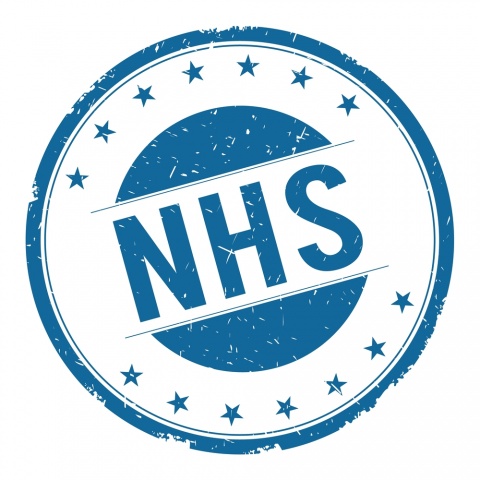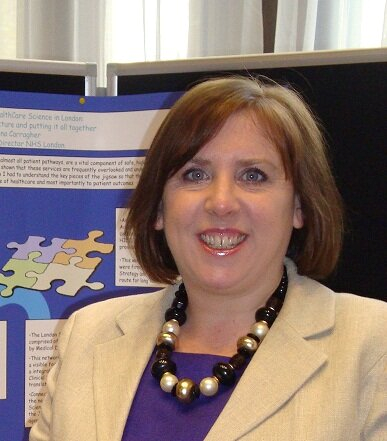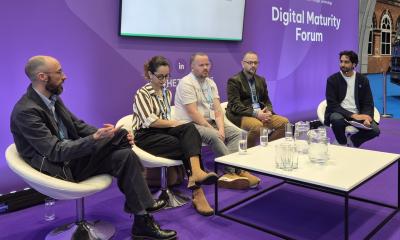Article • Pathology
Creating a data powerhouse
The ability to digitise results from patient samples has been one of the key enabling technologies that make personalised medicine possible now, says Dr Fiona Carragher, the Deputy Chief Scientific Officer for NHS England.
Report: Mark Nicholls
The combination, correlation and analysis of information are the cornerstone of personalised medicine.
Dr. Fiona Carragher
In her Keynote address at the Digital Pathology Congress (London. 1-2 December) Dr Fiona Carragher, the Deputy Chief Scientific Officer for NHS England discussed ‘Personalised medicine - The next dimension for digital pathology’, in the context of the NHS England Personalised Medicine strategy, and how digitisation, combination and analysis of diagnostics is central to personalised care. Ahead of the congress, she shared her views exclusively with European Hospital.
‘The combination, correlation and analysis of information are the cornerstone of personalised medicine,’ Dr Carragher pointed out. ‘It is the ability to digitise results from patient samples that has been one of the key enabling technologies that make personalised medicine possible now. Through digitising information in this whole-scale way we can apply new analytical techniques, such as machine learning and cluster analysis that open up possibilities for new diagnoses and characterisation that weren’t possible with the previous approaches.’
Is NHS England close to embracing personalised medicine through these means?
‘In the NHS we already have the foundations in place to bring the science and data together through our integrated informatics and genetic laboratory infrastructure. The NHS has spearheaded this new way of working by establishing 13 NHS Genomic Medicine Centres. These are pioneering and multidisciplinary network structures that require input across many clinical specialities. They are a step change in the processing of information, as they capture data from multiple systems and bring this together to analyse against common datasets and standards. Thanks to this infrastructure, by 2020 we aim to be offering whole genome sequencing for specific conditions; improved diagnosis of rare conditions and a better understanding of cancer; and comprehensive linked diagnostics data coupled with effective informatics analysis to give a full picture to patients.’
The next stage
In the NHS we already have the foundations in place to bring the science and data together through our integrated informatics and genetic laboratory infrastructure.
Dr. Fiona Carragher
‘We are continuing to develop the building blocks currently in place, with a focus on improving connectivity; educating, informing and supporting commissioners; quality and accreditation, and developing informatics and analysis capacity. More specifically, we are developing our specialist genetic and molecular pathology laboratories; investing in the data and informatics infrastructure for the NHS Genomic Medicine Centres; and working with Health Education England to develop the workforce capability and expertise to deliver genomic and personalised medicine.
‘By 2025 we hope to achieve a new taxonomy of medicine based on underlying cause and personal response; an integrated clinical service taking a “whole body approach”; and tailored, optimised and more effective therapies for better outcomes.’
How much investment is needed?
‘There are many external factors that will influence the success of this vision and it’s vital that we develop a shared ambition and commitment to deliver this with partners across the system and beyond. One key investment is in building partnerships between the NHS, academia, industry and patient groups – as maximum patient benefit will come where all these groups work together.
‘The future of digital pathology can only be delivered through enduring collaborative relationships and networks that ensure national consistency whilst delivering local responsiveness. To achieve this we need to invest in meeting the training, education and workforce planning challenges; facilitate the uptake and adoption of new scientific advances and technology; understand funding flows; develop commissioning information and education tools with commissioners; develop new models of care, and ensure quality and assurance.’
How will its worth and success be quantified?
‘High quality diagnostic services are crucial to both patient outcomes and in determining success of other targets and measures for the whole system. This is because they are at the front line of screening and assessment to diagnose disease and determine severity, functional impact and response to therapeutic intervention. As they form such an integral part of clinical decision making, digital pathology is a key driver in successful and sustainable delivery of A&E targets, Referral to Treatment Times for elective and out-patient care, reduction in hospital admissions and in length of stay.’
The NHS Personalised Medicine Strategy
The key lesson is in demonstrating how existing approaches can be transformed by using new digital technologies
Dr. Fiona Carragher
‘Personalised medicine is a move away from a “one-size-fits-all” approach to the treatment and care of patients with a particular condition, to one which uses new approaches to better manage patients’ health and target therapies. The NHS Personalised Medicine Strategy is changing the way medicine will be delivered to follow a targeted treatment approach enabled by integrated informatics. It turns on its head the traditional approach built around clinical teams specialising in a particular organ system, who work back from a patient’s symptoms to arrive at a diagnosis.
‘Personalised medicine recognises that complex diseases should no longer be considered as a single entity. As we integrate and analyse genomic and other data, we can find common factors and causes of variation, resulting in the discovery of new pathways of disease, which changes how diseases are thought of and treated. It enables us to recognise that the same underlying change in our DNA or genome can lead to problems in very different parts of the body, which would not have been previously identified with a more traditional care approach.’
Central to personalised care: digitisation, combination and analysis
‘An integrated characterisation of individuals, based on the diagnostic and clinical data the NHS generates, is central to personalised medicine. We have more data about people, their habits and their health than we’ve ever had. To maximise the true value of the available information, we need to bring together genomic, clinical and diagnostic, medicines, and lifestyle data. It’s the integration and analysis of this information that forms the powerhouse for personalised medicine.’
What could other NHS services learn from digital pathology?
‘The key lesson is in demonstrating how existing approaches can be transformed by using new digital technologies. Digital pathology and diagnostics are leading the way in the integration of services by establishing new models of care that are delivered locally and organised in a way that improves care in patients with complex conditions. Furthermore, digital pathology is driving research and innovation within the NHS, raising the game on healthcare technologies, undertaking a radical upgrade in prevention and public health and giving greater focus to primary care and the control patients have over their care.’
What will benefit hospitals/clinicians from personalised digital pathology?

‘With pathology having always been a key part of the diagnostic repertoire, our aim is to develop state-of-the-art diagnostic services in the NHS, underpinned by an effective commissioning system to deliver safe, effective and timely care for patients. To achieve this, hospitals and clinicians will benefit from working together to form multi-specialty community providers to deliver a range of diagnostic services with a different workforce skill mix. This will potentially offer greater value for money and a reduction in waiting times as they are delivered at the point of care.
‘Hospitals and clinicians will also benefit from the ‘vertical integration’ of hospital diagnostic services, with primary care diagnostic services organised in a continuum linked by technology. Furthermore, we are establishing hubs of diagnostic excellence to drive quality, efficiency, innovation and research.’
Patient benefits
‘There are four key benefits for patients: Firstly, personalised medicine drives prediction and prevention of disease. We’ll be able to identify the people most at risk of disease even before the onset of their symptoms. Earlier detection will open up the prospect of new treatment options and support people to make informed lifestyle choices.
‘Secondly, personalised medicine enables more precise diagnoses. Knowledge of each individual’s complex molecular and cellular processes, informed by other clinical and diagnostic information, will enable us to fully understand the abnormal function and determine the true cause of the symptoms.
‘Thirdly, personalised medicine will enable targeted and personalised interventions by offering the opportunity to move away from “trial-and-error” prescribing to optimal therapy first time round.
‘Finally, personalised medicine will enable a more participatory role for patients. The ability for a clinician to discuss with their patients information about individual genomic characteristics, lifestyle and environmental factors, and interpret personal data from wearable technology will drive a new type of conversation.’
The broader implications

‘By delivering the right decisions and interventions sooner, personalisation will not only deliver better outcomes for patients but ensure the NHS makes better use of resources – particularly the £15 billion annual drugs budget and the £8 billion annual diagnostics budget. Through personalised medicine we can also strengthen our ability to design appropriate health and care for our local populations through a more sophisticated understanding of the impact of age, gender and ethnicity, or lifestyle factors that influence the onset of disease. This will enable us to be far smarter in the way that we manage and leverage the limited resources we have.’
Profile:
Dr Fiona Carragher is the Deputy Chief Scientific Officer for England, supporting the head of the profession for the 50,000-strong healthcare science workforce in the National Health Service (NHS) and associated bodies. This covers more than 50 separate scientific specialties. With a clinical background, and as a Fellow of the Royal College of Pathologists, she has a broad portfolio of policy responsibilities across NHS England and the wider NHS and provides professional leadership and expert clinical advice and particularly for pathology within NHS England. A significant part of her role involves working across government, with partners in the Department of Health, the NHS, Public Health England, Health Education England, and others to help inform policy, influence legislation, deliver strategic change and introduce new ways of working.
09.12.2016











